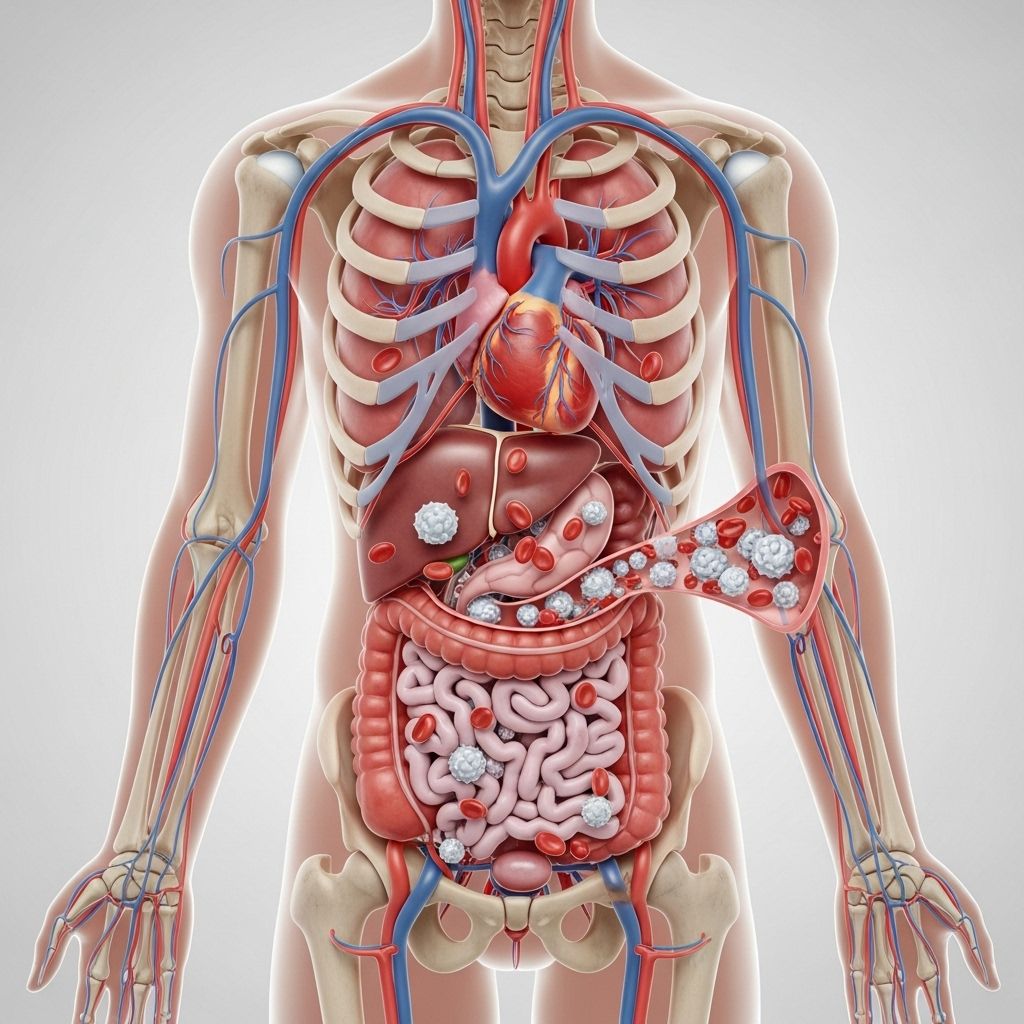How Leukemia Affects Your Body: A Complete Overview
Understand how leukemia impacts blood, bones, organs, and overall health, including symptoms, complications, and supportive treatments.

How Leukemia Affects Your Body
Leukemia is a type of blood cancer that affects not only the blood and bone marrow but also has a wide-reaching impact on many body systems. Its effects can range from mild fatigue to life-altering complications, depending on the type, stage, and progression of the disease. This comprehensive guide examines how leukemia alters different parts of your body, what symptoms you might experience, and the influence of both the disease and its treatments on your overall well-being.
What Is Leukemia?
Leukemia is a cancer primarily of the blood and bone marrow, where it leads to the uncontrolled production of abnormal white blood cells. These cells do not function as healthy immune cells should, disrupting the balance of blood cells and interfering with normal body functions. Leukemia is classified into several types1acute or chronic, and based on the specific lineage of affected cells (lymphoid or myeloid).
- Acute leukemias: Rapidly progressing, require urgent treatment.
- Chronic leukemias: Develop more slowly and often go unnoticed in early stages.
How Leukemia Affects the Blood
Since leukemia is a cancer that begins in blood-forming tissues, its earliest and most significant effects occur in the bloodstream and bone marrow. The overproduction of immature, abnormal white blood cells disrupts the formation of normal blood components:
- Red blood cells (RBCs): Carry oxygen throughout the body.
- White blood cells (WBCs): Protect against infections.
- Platelets: Help blood clot in response to injury.
As leukemia progresses, these changes may lead to several conditions:
Anemia (Low Red Blood Cells)
When red blood cell counts fall, oxygen delivery to tissues drops, triggering:
- Chronic fatigue and weakness
- Dizziness or lightheadedness
- Shortness of breath
- Pale skin
- Rapid or irregular heartbeat
- Chest pain (in severe cases)
Thrombocytopenia (Low Platelets)
Platelets are necessary for normal blood clotting. When levels are low, you may experience:
- Easy bruising or bruises that appear without clear cause
- Prolonged bleeding from small cuts or injuries
- Frequent or severe nosebleeds
- Bleeding gums, especially after brushing teeth
- Presence of small red or purple spots on the skin (petechiae)
- Blood in urine or stools
Impaired Immunity (Low Healthy White Blood Cells)
The white blood cells in leukemia are immature and abnormal, and they can’t effectively protect you from infections. This leads to:
- Increased risk of frequent, severe, or unusual infections
- Slow recovery from common illnesses
- Recurring fevers, chills, or unexplained infections
Effects on the Bone Marrow
Leukemia often starts in or quickly spreads to the bone marrow1he spongy tissue inside many bones that produces blood cells. The crowded marrow cannot make enough healthy blood cells, leading to:
- Bone and joint pain, especially in the legs, arms, ribs, or sternum
- Fever and feelings of malaise
- Weakness and fatigue
- Symptoms of bone marrow failure, such as frequent bleeding, bruising, and infections
Over time, untreated leukemia can ultimately cause the bone marrow to fail, which is life-threatening and requires urgent intervention.
Digestive System
Leukemia5s influence extends beyond blood, affecting digestive organs and your ability to eat and process food:
- Bleeding gums: This may make it painful or difficult to eat and maintain oral hygiene.
- Swollen liver or spleen: As leukemia cells accumulate, these organs enlarge, causing:
- Abdominal bloating or fullness, even after small meals
- Loss of appetite or unintentional weight loss
- Pain or tenderness under the ribs
- Chemotherapy side effects: Treatments like chemo may trigger nausea, vomiting, and loss of appetite, compounding nutrition problems.
Impact on the Skin
Several skin changes can signal leukemia5s spread or progression:
- Unexplained bruising: Often a first sign due to low platelets.
- Petechiae: Small, pinpoint red or purple dots, most often on the legs and feet.
- Paleness: Caused by anemia and reduced oxygen-carrying capacity.
- Fungal or bacterial rashes: Weakened immunity raises susceptibility to skin infections.
Effects on the Respiratory System
Leukemia can lead to breathing troubles via several mechanisms:
- Anemia reduces oxygen delivery, producing breathlessness after minimal effort.
- Pulmonary infections: Compromised immune cells can5t clear respiratory pathogens, resulting in recurrent or severe lung infections such as pneumonia.
- Bleeding in the lungs: Rare, but possible in cases of severe thrombocytopenia.
Neurological Effects: Brain and Nervous System
Leukemia may affect the brain and nervous system in one of several ways:
- Direct infiltration: Leukemia cells sometimes cluster near nerves or invade the brain or spinal cord, causing symptoms such as:
- Frequent or severe headaches
- Vision changes, dizziness, or confusion
- Numbness or weakness in limbs
- Seizures (rare)
- Low blood oxygen: Caused by anemia, can lead to mental ‘fog’ or difficulty concentrating.
- Chemotherapy effects: Some treatments may have neurological side effects, including cognitive changes or peripheral neuropathy (tingling, numbness in hands/feet).
Effects on the Heart and Circulatory System
Several factors combine to make leukemia a challenge for heart health:
- Anemia: The heart works harder to supply oxygen, increasing the risk of fast or irregular heartbeat and, in rare cases, heart failure.
- Cancer cell infiltration: Occasionally, abnormal cells lodge in blood vessels, potentially narrowing or blocking circulation (ischemic cardiac disease).
- Heart side effects from treatment: Some chemotherapy drugs (like anthracyclines) can potentially damage the heart muscle or rhythm, raising the risk for heart failure, especially after high doses.
Treatment Effects and Support
Treatments for leukemia—though life-saving—often create their own side effects and challenges throughout the body. Common approaches include chemotherapy, radiation, targeted therapies, and stem cell transplants.
References
- https://www.healthline.com/health/leukemia/how-does-leukemia-affect-your-body
- https://www.moffitt.org/cancers/leukemia/signs-symptoms/
- https://www.medicalnewstoday.com/articles/how-does-leukemia-affect-the-body
- https://my.clevelandclinic.org/health/diseases/4365-leukemia
- https://www.medicalnewstoday.com/articles/323090
- https://www.webmd.com/cancer/lymphoma/understanding-leukemia-basics
- https://www.healthline.com/health/video/cll-community-stories-2
- https://www.mayoclinic.org/diseases-conditions/leukemia/symptoms-causes/syc-20374373
Read full bio of medha deb












